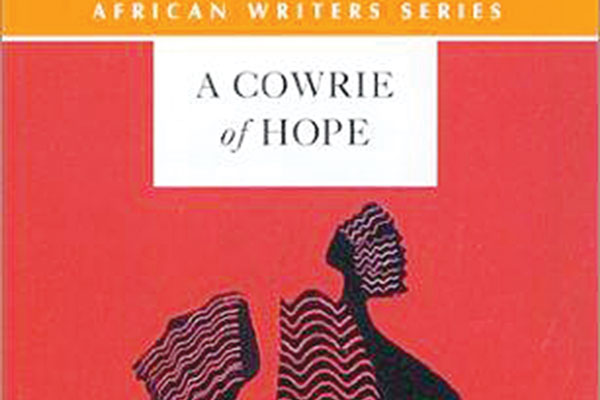
Title: A Cowrie of Hope Author: Binwell Sinyangwe Publisher: Heinemann (2000) ISBN: 978-0-435912-02-4
ZAMBIAN author Binwell Sinyangwe’s second literary offering, A Cowrie of Hope, was received warmly when it was published in 2000 and continues to hold significant interest for both readers and literary critics.
REVIEWED By BENIAH MUNENGWA

The book tells the story of Nasula, a mother of a well-behaved child Sula, who has finished her initial stages of education, but is failing to find ways of raising the money required to proceed for higher education.
But in-between the personal struggles are revelations, challenges, triumphs and tests to be faced.
It is about the struggle of a mother caught up in the 1990s’ drought, debts, trade liberation and privatisation programmes that characterised Frederick Chiluba’s rise to power following the exit of founding Head of State, Kenneth Kaunda.
Nasula’s quest in the narrative is to pursue her dream of ensuring that Sula completes her education, which she believes to be the only viable ticket out of poverty.
- Chamisa under fire over US$120K donation
- Mavhunga puts DeMbare into Chibuku quarterfinals
- Pension funds bet on Cabora Bassa oilfields
- Councils defy govt fire tender directive
Keep Reading
This reads like a continuation of the character of Wiza found in Sinyangwe’s earlier novel, Quills of Desire.
With the help of Nalikwi, a loyal friend, Nasula is eventually able to send her child to school.
The text, with its vivid presentation, takes the reader through all of Nasula’s journeys, but I feel Sinyangwe’s approach tended to over-purify the characters he loved yet tainting the characters he did not.
He took it too far.
Nasula, in spite of being in her 30s and living in a period marred with corruption, Aids, hunger and the breakdown of the family unit, remains pure.
Although in her 30s and widowed, she appears to be celibate and without flaws.
She becomes a non-human feature. She and her daughter become “spirits”, superwomen who are able to escape Zambia’s challenges affecting other mortals — like those characters cast in a negative light, including Isaki Chiswebe, Gode and the inspector.
The author deliberately skirts the plight of other women who seem to have bigger challenges.
What about Nalikwi who has 10 children and her husband might soon be unemployed?
What about the fate of Isaki’s wives, their children, their future?
Sinyangwe’s stance on manipulative marriages is not definite.
Although Nasula was emotionally abused by her late husband, she loved him even in death.
Like all matters to do with emotions, it must be noted that it is always complicated.
Policy change and its interaction with the native souls of the poor in Zambia is also poignantly highlighted in A Cowrie of Hope.
Nasula’s late husband’s brother, Isaki Chiswebe’s borrowing habits catch up with him when he fails to settle his debts.
The book also captures the disillusionment that afflicted the majority of Zambians during Chiluba’s rule as the country was plunged into problems deeper than those experienced during his predecessor’s presidency.
Kamwala market, a place that determines Sula’s make or break affair resembles our very own notorious Mbare Musika in that both are “a mound inhabited by a huge hungry tribe of termites in search of a livelihood”.
A jeopardised marketplace then becomes a common disturbing feature in the structures of struggling economies.
And the English text is implanted with Mabwe expressions, thereby arousing the language debate in the African writing landscape.
Can a writer write in his language and be heard? And if so, would I have accessed the text and story and if not, would he have intimately appealed to his very own Mabwe people? Unlike Quills of Desire, A Cowrie of Hope has a glossary of Mabwe words translated into English at the end of the text.
And again, though A Cowrie of Hope is impregnated with nuggets of hope for the girl child, it belongs to a generation of male writers who began ignoring the male child alongside legislators and it’s such a shame.
Feedback: [email protected]











